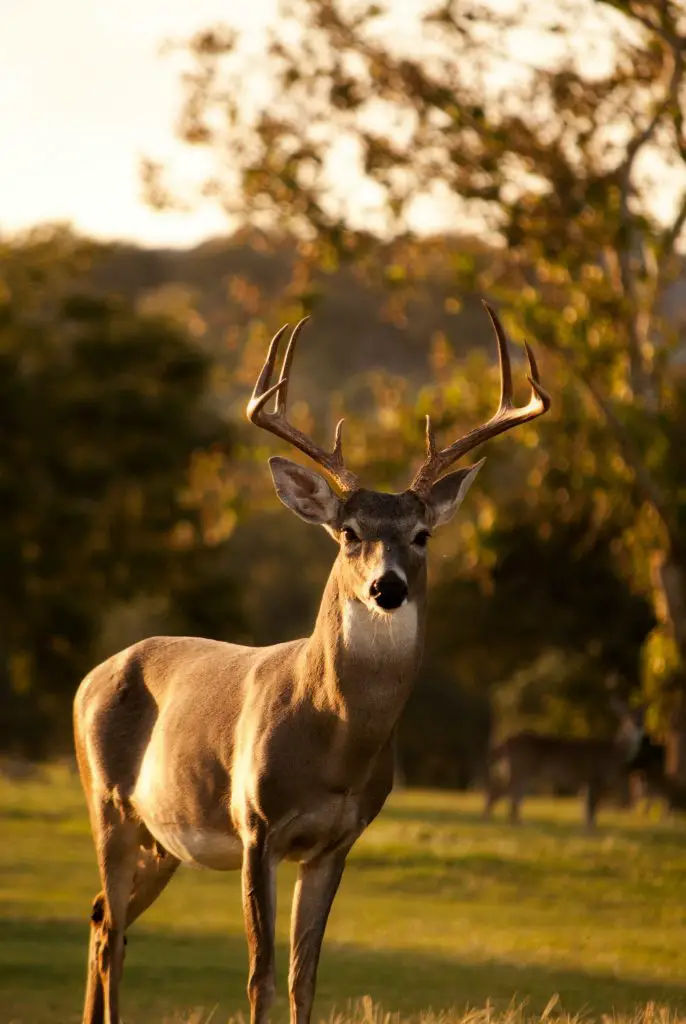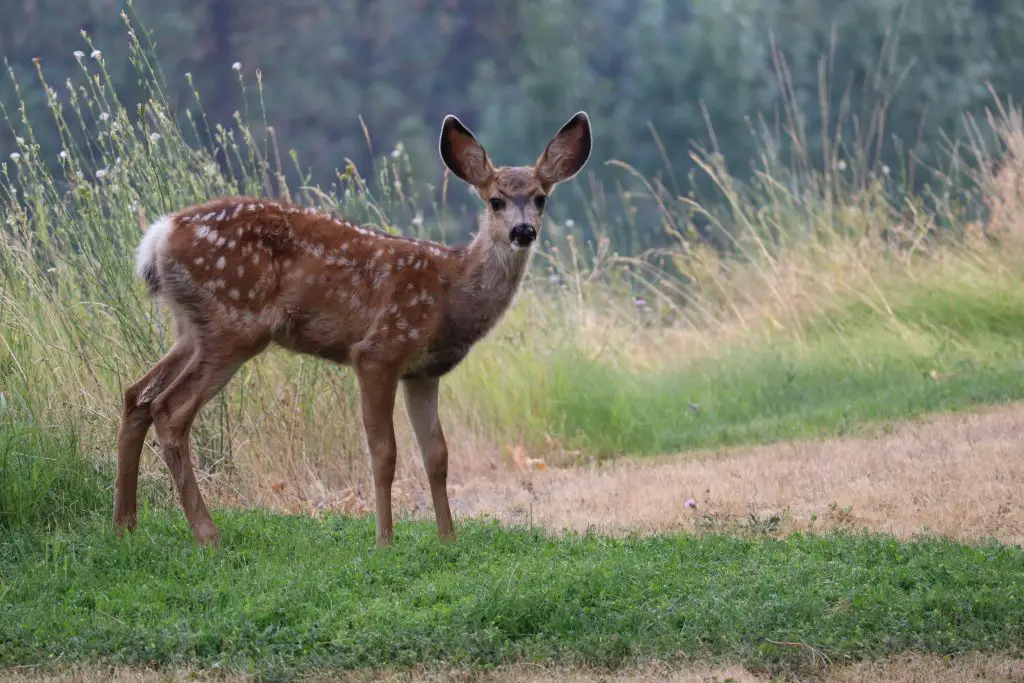How High Can A Deer Jump? A deer is a type of animal that is found in many different environments, including forests, wetlands, and agricultural land. They are known to be a pest in domestic and rural settings eating crops and ornamental plants. Deer are difficult to stop because they have an excellent jump that is used in situations where they need to evade predators. So how high can they jump?
Deer can jump approximately 6 to 7 ft in height based on a study carried out by the University of Nebraska. They carried out a systematic study on a population of white-tailed deer and found that close 100% of the deer could clear a 6ft fence with around 10% could clear a 7ft fence.
They also noted that many deer would attempt to jump the fence at 7ft high when provided with stimulus, however, the height of an 8 ft fence was sufficient in most cases to act as a deterrent which indicates that deer fences should ideally be 8 ft tall to avoid any potential of injury to the animal.

To Keep Deer Out Or Contain Them What Type Of Fencing Is Required?
In some areas of the world, deer are a challenge for people because of their excellent sense of smell and magnificent ability to find a weakness in a fence. Nevertheless, deer rarely try hard to go out of their way in order to overcome that fence.
This is a great advantage economically as the fence does not have to be incredibly strong as the animals don’t try their hardest to get through the fence. This means that a basic fence wire will often be good enough provided that the deer population in the surrounding area is not too high.
The most common type of fence used for deer is a simple mesh fence that is 8ft tall. These mesh fences sometimes have a single-strand electric wire strung across the front of them which is energized to deter the deer from even coming in contact with the fence.
This is problematic sometimes because deer are known to rub their antlers up against the posts of the fence which over time can result in the post wearing away reducing the life of the fence.
Deer instinctively rub their antlers against fence posts, trees, and other solid objects to remove velvet and dead hairs. The deer are born with soft hair called “velvet” that hardens and then falls off when the antlers are fully grown. The deer rub against these objects to remove the hair. Deer also rub their antlers against objects for communication, marking their territory as well as for relieving stress.
A basic deer fencing that can be installed requires fence posts to be cemented into the ground at intervals of around five feet on average. The recommended size for the wire mesh is usually two inches by two inches. To prevent an animal from accidentally running through the fence a double layer of wire is sometimes applied to the bottom few feet of the fence.
Additionally, it is advisable to tie streamers to the fence as the fence can be difficult to see for some deer particularly around dusk. Doing this will reduce the chances of the deer attempting to run through the fence if they are startled by a predator.

As mentioned above if there is a large deer population nearby it is advisable to also add an electric wire to the fence as this will deter deer from coming in contact with the fence. If you are using just a single strand of electric wire, which is usually sufficient, it is advisable to put it at a height of 30 inches from the ground.
It is usually only necessary to add additional electric wires if damage to the fences is observed over time. Additional wires are set 10 inches apart to ensure there is a high chance that the animal will receive a shock.
However, to increase your chances of avoiding problems with your fence you can train the animals to leave the fence alone. This can be done by smearing peanut butter along the electric wires as this will ensure that the animals gets a shock in a sensitive part of the body. In most cases, this will ensure that the deer stay away permanently.
Are There Certain Species Of Deer That Can Jump Higher Than Others?
This is a difficult question to answer with any sort of authority because nearly all the systematic studies are focused on the white-tailed deer due to its economic importance. However, according to the deer association, a 2010 study found that captured wild deer had the capacity to jump an absolute maximum of 8 feet (2.4 meters).
This differs from claims that have been made by a number of different people that say that deer could jump higher. To answer this question in more detail 150 different wildlife biologists who commonly see deer in the wild were surveyed. Of this group only 6 claimed to have seen a deer jump high than 8 ft.
This suggests that there is unlikely to be deer species that have jumping capacities that are significantly different from the whitetail deer which indicates that an 8ft high fence will be sufficient irrespective of the species of deer you are dealing with.
Relevant Articles
Are Raspberries Deer Resistant? (And How To Protect Them)
